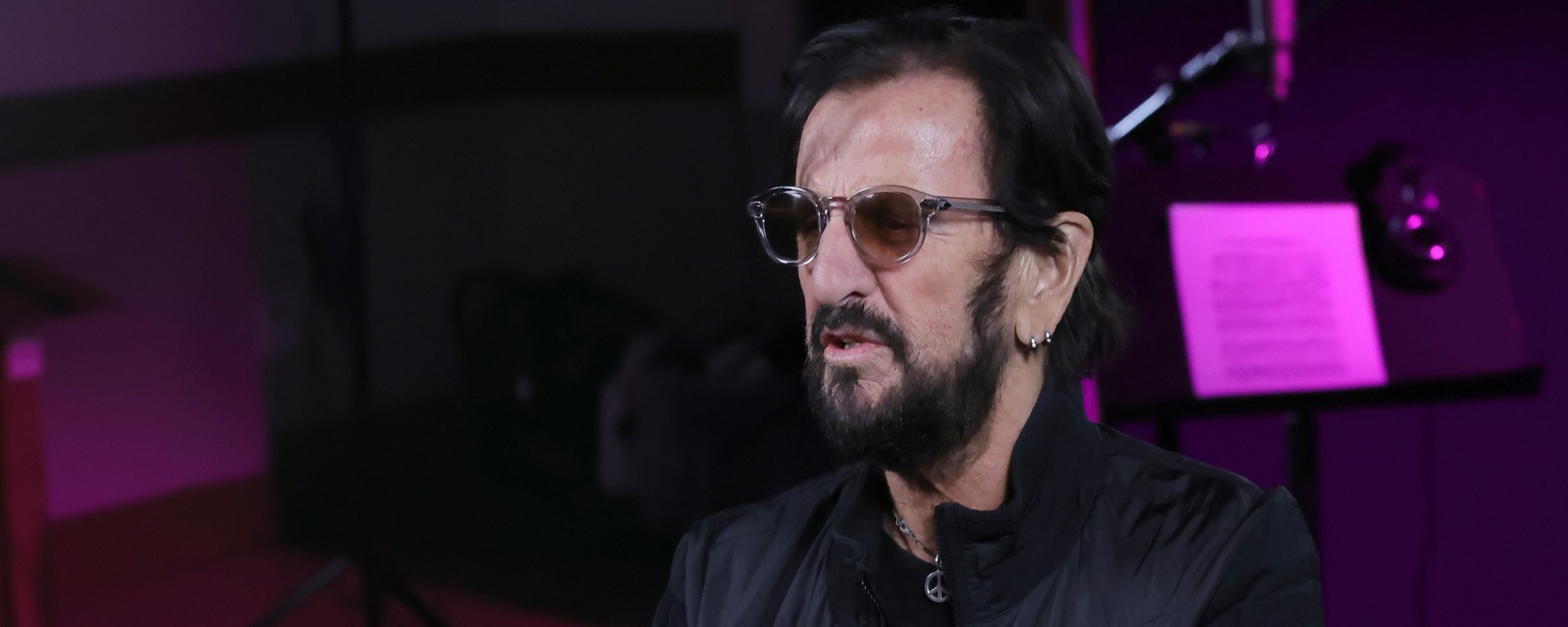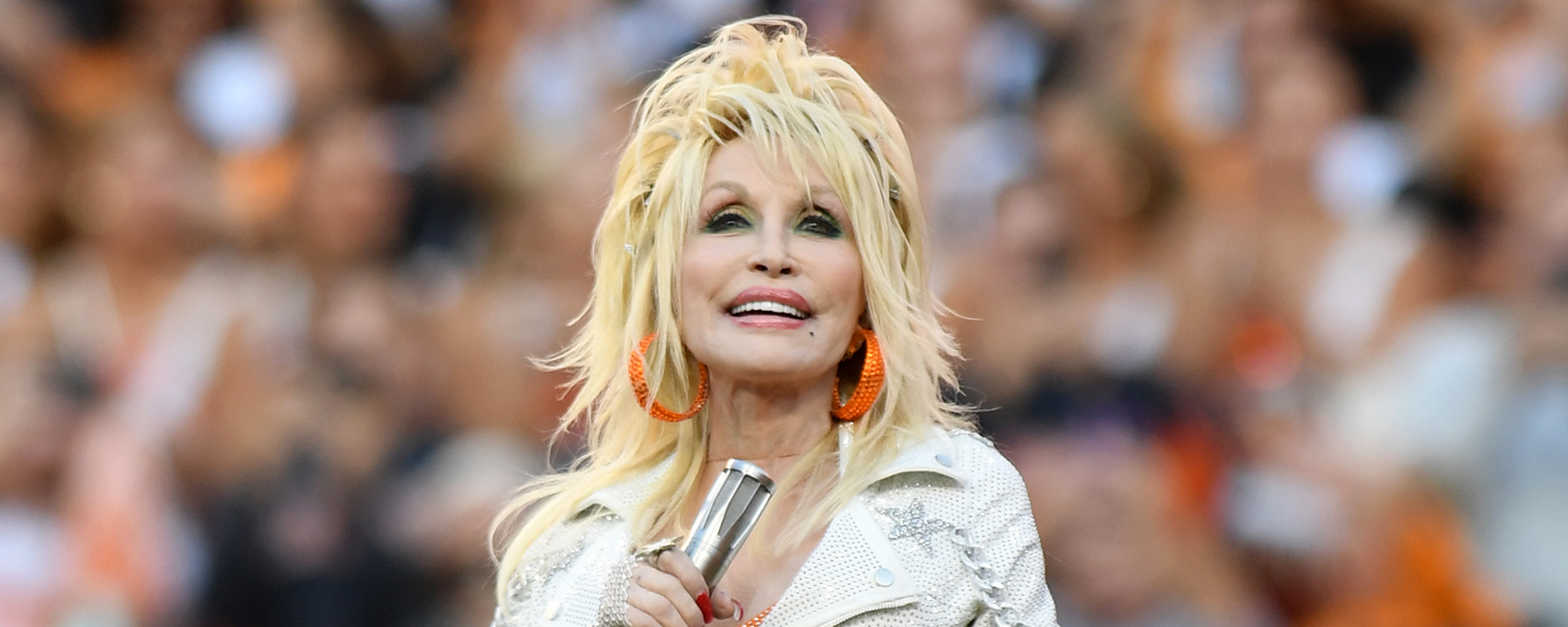Dolly Parton fans have been marveling over her beauty and talent since her performance at the Cowboys—Commanders game over Thanksgiving, where she appeared in a Dallas Cowboys Cheerleader uniform and performed “9 to 5,” “We Are the Champions,” and “Jolene.” Some fans are taking to social media to compare today’s 77-year-old Parton to 1977 Parton, calling her a national treasure, which, honestly, truer words were never spoken.
Videos by American Songwriter
Dolly Parton clearly has a work ethic we should all aspire to. In the spirit of Dolly, here’s a look at how she’s changed over the years, beginning with her debut in 1967 and looking forward to how she’s going to stay a legend even further in the future.
Then: 1960s —Hello, I’m Dolly
Dolly Parton made her country album debut with Hello, I’m Dolly in 1967, when she was 21. It was a mix of songs she wrote herself and songs written by her uncle, Bill Owens, as well as “Dumb Blonde” written by Curly Putnam and “I’ve Lived My Life” written by Lola Jean Dillon. The album charted at number 11 on the Billboard Top Country Albums at the time, and was greeted with generally positive critic reviews.
Now: 2023—Rockstar
On November 17, Parton released her most recent album, a 30-track rock ‘n’ roll offering featuring covers of the most influential rock songs of the past few decades. She partnered with many of the songs’ original writers or performers, such as Paul McCartney and Ringo Starr on “Let It Be,” Ann Wilson on “Magic Man,” and Sting on “Every Breath You Take.” She also teamed up with contemporary artists to cover legendary songs, like “Stairway to Heaven” with Lizzo and “Night Moves” with Chris Stapleton.
Rockstar was a first for Parton, a notable departure from her original country sound from Hello, I’m Dolly. But, her vocals are similar to her 1967 debut, proving that she still has the chops to perform literally anything even 56 years later. There are indeed subtle changes in her voice that indicate she has adapted her vocals as she aged, but she still has the ability to belt and yodel her way through any song you throw at her. Rockstar is definitely indicative of Parton’s range, both vocally and genre-wise.
Then: 1970s —”Mule Skinner Blues” and Dolly’s solo career
During the late 1960s and early 1970s, Parton was singing with Porter Wagoner, but she was attempting to make a name for herself without him as well. In 1970, both she and Wagoner were frustrated with her lack of success as a solo artist, so Wagoner suggested she record a cover of Jimmie Rodgers’ “Mule Skinner Blues.” The single catapulted to No. 3 on the country chart in 1971, and her first No. 1 single, “Joshua,” followed soon after.
In 1973, she released “Jolene,” which was—and still is—her biggest hit to date. It topped the country chart and crept up on the Hot 100, successfully fortifying the foundation of her solo career. By 1975, she and Wagoner recorded their last album together, Say Forever You’ll Be Mine, and Parton shot to the top of the country chart again with “I Will Always Love You.”
Now: 2020—”When Life is Good Again” and A Holly Dolly Christmas
During the Covid-19 pandemic, Parton released the song “When Life is Good Again” in a campaign to keep spirits up and combat the various ways Covid-19 isolation impacted mental health. The song featured an uplifting message about life after the pandemic, with Parton singing about keeping up with personal relationships, sharing her appreciation of life, and encouraging people to love one another and keep their hearts open. In addition to the song, Parton also donated $1 million to Vanderbilt University Medical Center in the aid of Covid-19 research.
Additionally that year, Parton released her third Christmas album, A Holly Dolly Christmas, which was Parton’s eighth album to top the Billboard Top Country Albums Chart. The album received positive reviews from critics, but it was the sentiment behind the album in conjunction with “When Life is Good Again” that really makes the album stand out. We all benefited from Dolly Parton’s famous resilience to get us through the pandemic, and she definitely delivered that year.
Then: 1980s—Transition to pop music and 9 to 5
Parton made the shift from country to pop music in the late 1970s and early1980s with her first solo-produced album New Harvest…First Gathering from 1977, which didn’t impress the pop charts. Following a rough crossover, she reworked her pop sound with producer Gary Klein and came out with Here You Come Again, also from 1977. This album reached No. 20 on the pop chart and topped the country chart (as her albums were wont to do), and became her first to sell one million copies.
Harnessing her newfound crossover success, Parton then starred in the 1980 film 9 to 5 with Lily Tomlin and Jane Fonda. Her titular theme song for the movie gave her a No. 1 hit on the pop and country charts simultaneously, and her songs stayed in the top 10’s consistently after that.
In the late 80s she developed a country-bluegrass sound that saw a dip in her chart success and album sales, but she would make up for that in the 1990s and early 2000s.
Now: 2019—Dolly Parton’s Heartstrings
Parton has collected a decent sized catalog of film and TV credits since the 1980s, and she has also had a few documentary films and shows made about her. In 2019, the anthology series Dolly Parton’s Heartstrings came to television, showcasing the inspirations, stories, and influences behind her most beloved songs.
Heartstrings aired on Netflix in November 2019, and featured a star-studded cast portraying characters and storylines from Parton’s well-known songs. This included Julianne Hough in the story of “Jolene,” Delta Burke portraying the story of “Two Doors Down,” and Ginnifer Goodwin in the story of “These Old Bones.” The series was received well, and highlighted different and interesting interpretations of Parton’s songs.
Then: 1990s—The Country Music Hall of Fame
In 1999, Parton was inducted into the Country Music Hall of Fame, and the permanent exhibit at the Hall of Fame includes one of her outfits and wigs, and a wall of magazine covers. She was also featured in the Hall of Fame’s 2020 exhibition American Currents: State of the Music, which featured exhibits of Reba McEntire, Billy Ray Cyrus, and John Prine as well. Parton was part of the Unbroken Circle exhibit covering contemporary artists and their influences. English singer-songwriter Yola was part of the exhibit showcasing Dolly Parton’s impact on her music.
Now: 2016—Willie Nelson Lifetime Achievement Award at the CMAs
In 2016, Parton celebrated 50 years of the CMA Awards by being one of 30 artists participating in a mashup of the songs “Take Me Home, Country Roads,” “On the Road Again,” and her hit “I Will Always Love You.” At that CMA Awards ceremony, she was also awarded the Willie Nelson Lifetime Achievement Award and a tribute by Jennifer Nettles, Pentatonix, Reba McEntire, Kacey Musgraves, Carrie Underwood, and Martina McBride.
(Featured Image by Sam Hodde/Getty Images for ABA)






Leave a Reply
Only members can comment. Become a member. Already a member? Log in.